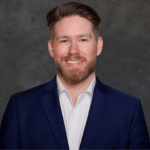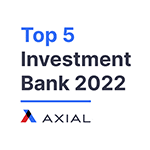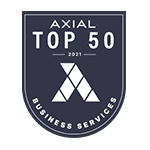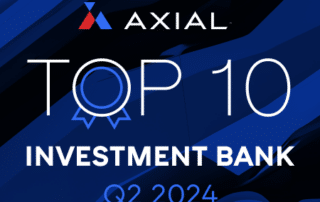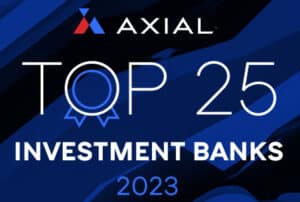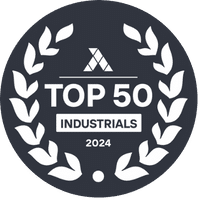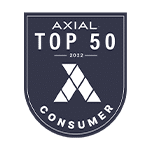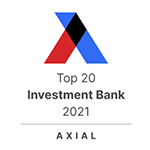
The Future of Automotive, Strategy, and Industry Trends with Mike Spagnola
On this week’s episode, Cole Strandberg chats with a special episode… someone who sits at the helm of one of the most iconic names in the automotive world — Mike Spagnola, CEO of SEMA. SEMA is more than just a trade show — it’s a global leader of- an influence for- automotive innovation, culture, and connection. Mike oversees it all: from lobbying the federal government on the automotive industry’s behalf to strategic industry programs and the continued evolution of the SEMA Show itself. In this conversation, they preview what to expect at SEMA 2025, explore trends across the broader automotive aftermarket, and talk about what excites Mike most about the future of our industry. Whether you’re a builder, a supplier, or a repairer — this is one of those episodes that reminds you why we love this space.
Cole Strandberg: Looking forward to an awesome conversation. This is at the time of this recording, we’re a little ways out, but at the time of anybody listening to this, we are on the doorstep of the most wonderful time of the year. And that of course is sema. So our conversation is timely. Before we dive in, we’d love to hear a little bit about your background and your role today.
Mike Spagnola: Sure. I’ve been in the automotive industry since getting out of high school, honestly. And while I was going to college, worked at a Datsun dealership, really as a parts delivery driver and parts guy and counterman and you know, worked my way up to a store manager but have been in the import car parts business and then in the performance business my entire career, so bought and sold a couple companies over that time. I sold my last company in 2013 and joined SEMA to do the SEMA Garage, this technology center that we put together. And I did that on a three year contract. So I’m about 12 and a half years into my three year contract now.
Cole Strandberg: Awesome. Love it. Very cool background. You’ve touched a few different segments and subsectors of the industry, so no wonder we are having you where you are today. Last year we had a series at this time really focused on the battle of the builders. We had a colleague of yours, RJ Devara, on here. It was an awesome conversation and SEMA 2024 was wonderful as always. There’s something really special and unique about that week every year. Tell us what to expect here coming up in 2025.
Mike Spagnola: Well, probably especially for your listeners, we’re doing a lot of work in the collision and repair side. So this year the collision and repair section of our show, which is about 20% of our show, is 300,000 square feet.
Cole Strandberg: Wow.
Mike Spagnola: And, and so we’re really looking forward to that. About 20,000 people come from the collision industry to the show every year and doesn’t look like it’s going to be any different this year. In fact, it looks like it could be a tick up. What I’m really excited about is that we continue to push the envelope on technology and include in that will be a 9,000 square foot ADOS Center. We’re really focusing and doing a lot of training on just all the advanced driver assistance programs and what those mean and what those mean to the industry for repair, for modification, for all those sorts of things.
Cole Strandberg: Exciting stuff. It’s with so much innovation in the automotive industry, in the collision repair subsector of that industry, if you want to have a finger on your pulse of that change in that innovation, SEMA is the place to do it. It’s the one time in the year where all the technology is there, all the thought leaders, all the influencers, all your colleagues are together in one place now. I last year had the opportunity to go to Auto Mechanica over in Frankfurt and SEMA virtually back to back. And no disrespect to auto mechanic, it was a very cool show. But the energy and the feel at SEMA is so positive. So looking forward to the future. It’s really a unique experience. Talk to me about your personal interest. What are you most excited to see here at SEMA 2025?
Mike Spagnola: Yeah, you know, you’re right. I mean I’ve been on both the replacement part side of the industry and of course the performance side of the industry. And there’s just something special about all the passion and the love that goes on during the SEMA show. And you know, it really is a, it’s almost old home week for so many of us. The, the opportunity to see what’s going on, to network, just to see the innovation. You know, for me it’s always just, you know, and of course I’m somewhere else every half hour, every 40 minutes, the whole week of the show. So I don’t really get to see the show much. I, I go home and then get to watch it on YouTube. And my kids will send me pictures of things that they saw at the show I didn’t get to see. But it’s just always that constant innovation, right? It’s, you know, you see even some of these custom car builds and when you think it just can’t get better or can’t be different or can’t go anywhere else, that envelope just continues to be pushed in, in just the, the, the body work, the painting, the execution, the welding, you know, all those different components that go on and then the innovation of new products, just all the, the new tools and equipment and products that our manufacturers come out with. You know, about 2500 manufacturers display at the show and about 160,000 people buyers come to the show. So it’s a chance to catch up with those guys. It’s a chance to talk to them about what’s going on. You know, we’ll have about eight different OEs at the show. They’ll release products, they’ll release new vehicles. It is the place, it really becomes the center of the automotive universe for that week of just innovation and new product and displays. And it’s just mind blowing. You know, you end up 1500 show cars and you end up walking back vehicles that if you saw on the street, you would stop and gaze at for an hour. And yet, you know, you walk by 10 of those in 10 minutes.
Cole Strandberg: Everywhere you, everywhere you look, right? You almost need a heating pad for your neck at the end of every day because you’re just like all over the place. Could not agree more. And it’s interesting, growing up around the collision repair industry, my parents had a business in the space. It used to be a pretty fragmented trade show circuit, right. You had shows in Orlando and New Orleans and Dallas. And today in feels that, that SEMA’s really consolidated all of those into one just super productive, super fun old home week where you see everybody you’ve ever met in the industry all together in one place. Talk to me about battle of the builders. That’s obviously top of mind for a lot of folks, both professionals showing up and folks just coming in to see the sites.
Mike Spagnola: Yeah, we’re going to be in our 11th year of battle of the builders and the top builders from all of the United States come together to win that prize to be the top battle of the builder. And so you’ve got, you know, seasoned pros and you’ve got vehicles that literally are a million dollars or more for a build. It’s amazing to me how many high end buyers that are out there that’ll wait two years to have a chip foose or to have a, you know, any of these major builders build a car form and then display it at the SEMA show or unveil it at the SEMA show. So you get ring brothers, you get all these just incredible builders that come and they, you know, a customer will have them build their dream car and again at a million dollars or more and, and then they’ll want to unveil it at the SEMA show. So it is definitely, you know, we’ll start with the top 40 and then take it to the 20, take top 10 and then, you know, we get down to the, to the winner of the battle of the builders. What I really love is the young gun section, which is under 29 years old and the innovation from some of these younger kids building these cars. I mean, I love to restore and build cars on my own. I don’t have 1/5 the talent of these 20 to 29 year olds that are building these cars. It’s just amazing. Still, you know, they keep trying to say the trades are dead and, and the kids aren’t interested in cars and any of that sort of stuff. It’s all baloney. There is some amazing innovation, some amazing young builders out there that just push the envelope way beyond. So I love that competition. I love the innovation that comes with it. I love the, I, I know a little bit about the stress that happens, you know, now and what’s going on kind of that. We call it the SEMA Crunch and what people are doing to get ready for those vehicles to be displayed at the show. I did a little bit of that in, in a prior life and I know where the stress levels are right now.
Cole Strandberg: It was a fascinating series last year for that exact reason. You touched on a couple key points, that excitement, but also the stress. As we’re coming down the wire. Are we going to get this thing done in time? Are we going to get this thing to the level we expected? And the, the young guns, I mean the talent that is out there, the interest that is out there. In speaking with Dave Kindig last year, something that really came to mind was the passion he had and, and the weight he kind of put on his own shoulders about being a mentor for the next generation of him was really cool to see. And it’s just an industry that seems to greet young people with open arms.
Mike Spagnola: Yeah, Dave’s an amazing builder and a great advocate for our industry. And you’re right, a great mentor. I’ve seen him you know, what’s really fun for me is to see these Kendig or any of these other guys that are obviously, you know, in our industry, very well known and yet there’s no ego. Right. They’ll take time to talk to anybody. They’ll take time to talk to a young builder or, you know, take an autograph or any of those sorts of things and really take time to talk about the industry and the hobby and the passion and all of that. And I love that. I love to see the fact that, you know, all these really well known guys are willing to spend time with just about anybody and talk anything about cars and anything about passion and, you know, take their knowledge and bestow it on others. You’re right. I mean, that, that’s a very cool part of our industry.
Cole Strandberg: Well, it’s something that comes to mind immediately for me, and I talk about this all the time in my professional life is you have business owners in industries across the gamut, right. You got H vac or plumbing or whatever trade, and they care about their business, they love their business. Business owners and, and even employees in the automotive industry, they love what they do and it comes through. And so it’s a jovial atmosphere. Whether you’re there to check out the sites or you’re there to sell a product, everyone really wants to be there, which you can tell.
Mike Spagnola: Yeah, you know, I have a chance to talk to some high school and college students all the time and you know, if you can land in an industry where you are interested and passionate about it, you know, they always say you never work a day in your life. I don’t know if I completely agree with that because we work all pretty hard. But I’m telling you, I am absolutely blessed to be in this industry, to be in it now for over 50 years and to be so passionate about it still today and fired up about it and excited to see what’s going on and to meet others and to be know, see how the generations are moving forward with different things. But it’s, it’s, it’s amazing to be part of this industry and you know, and you just love what we do. I mean, you know, it’s, I still on weekends even still go do car stuff because it’s just, it’s just fun and it’s just great to meet people. It’s great to meet industry folks and, and enthusiasts alike. And you know, my wife laughs at me because I always tend to find the car guys at a party, but we, we find each other and we end up you know, talking the entire evening. Our phone. Our phones come out pretty quick with lots of photos.
Cole Strandberg: Oh, yeah. Well, speaking of which, I gotta go ahead and start deleting some pictures off my phone, so I have plenty to take at the SEMA show every year. It becomes a bit of a challenge. Very. You know, a theme for me when I think of SEMA is innovation. And you touched on that a little bit last year. We talked a lot with the restomod guys. Things like EV conversions on these classics and restoration cars on the collision side. You mentioned adas. Certainly something that’s top of mind for many. What are you looking to see this year out of some new innovations coming out there to the market?
Mike Spagnola: Yeah, I always like to spend my first half a day, if I can. I get to do it on Monday. So I kind of cheat. But, you know, we have a new innovation and a new products area of the show, which is about 2,000 different products. And I like to cruise that. I mean, really, if you are a buyer and if you’re looking for new products, that’s the place to go. It’s good for you to go visit the booths and all that, but you really need to get to that new product section first and just see what’s going on. You know, I think again, we’re seeing a lot more in just different fuel technologies. And, you know, you’re right, EV conversions have been big. There’s a lot of work now being done on internal combustion engines running on hydrogen and other forms of fuels. So that’s one of the things we were really excited about. And even as we, you may be aware that we kind of pushed on this EV mandate that was. We were pretty boisterous in the fact that we think EVs are part of our future, but we don’t think they should be government mandated. And we were excited to see the administration sign that bill because we thought it stifled innovation. There was, you know, America was built on innovation and the opportunity to see not just EVs, but again, to see synthetic fuels and to see internal combustion engines running on different kinds of fuels. You know, hydrogen again, for example. There’s so many different opportunities. Hybrids, you know, I think now one of the big things we’re seeing is performance products being built for hybrid engines. And that was something we kind of didn’t see a lot before. So it really is. I don’t know that I see exactly what’s going to happen this year. I’m kind of a tools and equipment guy anyway, so I like to see that stuff Certainly a lot more being done there. And again, just even I’m pretty passionate about education on ADOs and we’re doing a lot of work on not just collision repair ADOs and getting a car back to its standard look and drivability from a, after a collision, but we’re looking at it from a modified standpoint. So what happens when you add accessories to that vehicle or what happens when you want to change the ride height? If you want to take your, you name it, full size truck and put a larger tire and wheel on it, or do a 3 inch lift on it, or leveling kit or you know, even add bike racks or other accessories, you were really doing a lot of research in that area with our SEMA garages and with the FIA to look at it from a global standpoint. And so I’m excited about that stuff. I’m excited about really understanding and working alongside the OEs, working alongside NHTSA, you know, FIA again and just our research center in Detroit on what happens when you modify a vehicle and what happens to all those ADOS sensors.
Cole Strandberg: Man, it’s something that is very much needed. Anytime you have innovation, you have challenges and those challenges lead to opportunity. And that to me is kind of the epitome of what a lot of these new innovations that are going to be talked about and released at SEMA represent. SEMA has established itself as the dominant place to be in the automotive industry. Again, every single week, or every single SEMA is the week where every single person in the industry who you want to see is pretty much there. You could just rest on your laurels, but this is my 10th SEMA coming up this year. I think I took credit for 10 last year, but I, I messed up the math with COVID and stuff. This is 10. And it’s always changing, it’s always evolving. There’s always cool new experiences and, and education seminars, things you can get. So what new experiences, education or networking opportunities should attendees be looking out for in 2025?
Mike Spagnola: Yeah, so we, you know, as you know from last year, we were about out of room. And so believe it or not, we’re expanding again and we’ve moved into the Westgate Hotel. We have put our International Pavilion there. And so any international manufacturers that have been with us only for a couple years will be in the Westgate Hotel this year. And that’s going to allow us to expand a lot of our displays and a lot of our manufacturers to, to be in all the other halls. So again, I think you’ll see a lot of new Vehicles come out. A lot of new custom vehicles come out. You’ll see you’re going to meet just about anybody there. I know that we’ve got a lot of OEs coming. There could be some unveiling of various products at the oes. You’re going to see the normal celebrities there. I know Jay Leno is planning on being there and some of those other guys. We do have confirmation that Mohammed Bin Salim, who is the head of fia, which is part of the Formula One group, he’s going to be with us Tuesday morning at our opening breakfast and we’ll be walking the show. So, you know, from a celebrity sighting and from a just, you know, well known manufacturer sighting, I think you’re going to see a lot. I think you’ll see some Formula one vehicles there. And as we kind of have formed a relationship again with the FIA in Formula One, and this year we’re moving our banquet over to the Fountain Blue. So Thursday night we always have an awards ceremony and an awards banquet that’ll be at the Fountain Blue this year because again, we’re expanding and so we’re continuing to make that footprint look bigger. And of course, then Friday is open to consumers. So as a consumer, you can buy a ticket, go to the SEMA show, and then Friday night is our SEMA Fest, which is a major concert and we’re excited about that as well. Queens of the Stone Age. And we’ll be there playing. So excited about all of that. It just, it is just a week of cars and innovation and business to business opportunities. You know, if you think about it, if you had to go, let’s just say you have 20 vendors that you need to go see throughout the year. You can try to travel to all those 20 vendors and go to see them or come to the SEMA show and see all of them, you know, within a day or two. And so for, you know, from a cost standpoint even, and from the opportunity to just see what’s going on and see displays and, you know, whether it’s vehicle wraps or the latest, you know, in wheels and brakes and different technologies and different, you know, all that sort of innovation just comes together in four days, 100.
Cole Strandberg: It’s. You’re getting me excited. I. I had to miss out on Friday’s festivities last year because, believe it or not, folks not in the industry sometimes get married right after sema, which is incredibly, what a faux pas. But so far so good this year, no wedding obligations. So I will be there very much. Looking forward to it. That’s Awesome. A good time, no question. Now Seema and you, you mentioned it a little bit earlier in our conversation, but continues to build on its year round role for the broader automotive aftermarket. From legislation to education, product development. What should shops know about what you guys have going on this year and beyond?
Mike Spagnola: Yeah, so we’re doing a lot of work again in the, in, in just the ADOS area. So we’re working with nhtsa, we’re working with all the government authorities along with, we’re doing a lot of work in, in both static and in dynamic testing right now. So we’re putting a lot of money into this. We have a lab in, in Detroit, our SEMA garage in Detroit where we’ve built a ADOS center and we are testing all the various ADOS equipment. Again, we’re taking vehicles for example. We took a brand new Chevy Silverado 1500 and we did both static and dynamic testing from and to understand how those systems worked. And then we put a leveling kit, same vehicle, we put a 3 inch kit, 33 inch tires, 35 inch tires and then a 6 inch kit, all those sort of products again and did both static and dynamic testing to just really understand what was going on. We’ve done that now on five different truck models with a Ford and a Dodge and a Toyota, etc. And really trying to understand what’s going on when you add accessories and add products and how those vehicles operate. So we’re spending a lot of time in that area. We’re doing work down at TRC in Ohio. I was there last week where you’ve seen this dynamic testing where a vehicle run down a track and then a balloon person will walk across the street or a vehicle will be parked in front of it and we have to see if the automatic braking systems work. So again we’re doing that work, both stock and modified to understand what happens to those systems and then working alongside the OEs. It’s interesting on some of the OEs, talking to them that they’re not even sure what happens when a modified vehicle is tested, even with their own accessories. So spending a lot of time on that subject. We had meetings with NHTSA as well. Last week we had our partners from the FIA Mobility section with us, which are world known. So we are talking about these sort of things on a global stage and then understanding, as you may know, these products right now are not mandated. But a lot of vehicle manufacturers are putting them on just because it helps with their safety ratings. But come 2029, for example, automatic braking takes place and so it’s important for us to have a seat at the table with NHTSA and with the government authorities to be able to talk to them about not just what happens when a vehicle stock, but number one, understanding what happens when it’s been in a collision, training with the collision industry and training with the OES as to what those repairs look like. And then what do they look like when they’re modified and vehicles been modified again with ride height or accessories, and then having that relationship between the FIA again, which is a global Mobility association, they’re probably better known for the Formula one racing, but they actually have a mobility program which is what we’re part of, and then nhtsa, the OES and ourselves, and really understanding those things and really understanding what you have to do to recalibrate those vehicles afterwards so we’re on the leading side of this. And then even having a seat at the table when it comes to what do those new rules and regs look like? How many feet do you have to allow before it can stop, really? Is there even an area to be able to turn those systems off? And the reason that we think they need to be turned off. You can imagine taking your 2029 Corvette and taking it out into a racetrack and then deciding to dive into a corner and the automatic braking going on. So there’s got to be ability to turn, turn them off or passing another Corvette, you know, on a racetrack and the vehicle won’t let you pass or taking your Jeep or your Bronco off roading and it sees a rock and wants to stop. So, you know, even just to explain to NHTSA and the other government authorities that there’s got to be an off switch on these products, which is currently not in the 29 regs, you know, so having that seat at the table and that voice to say, hey, don’t.
Cole Strandberg: Forget about us, man, you and your team, the, the automotive aftermarket in the broader mobility sector is such a wide reaching segment of, of everything. And you think about the range of low stakes, you know, no offense to lighting, cleaning products, all the way to life safety products and, and you guys have your hands in every bit of it and are responsible for helping us shape regulation around all of it, big shoes and, and filling them quite well, if I might say. I do my research now, Mike, before I hit record on a podcast. And so I have a quote here saying something along the lines of 2024 was one of SEMA’s most successful years ever. And that was your quote, if you don’t remember it what shifts or changes or momentum drove that momentum into 2024 and should we expect hopefully the same or better in 2025?
Mike Spagnola: Gosh, so many things. But we for sure was our largest and best show ever. So largest show. We were the number one show for the third year in Las Vegas. Largest automotive business to business show in the United States. Obviously that’s no good unless people are connecting. We don’t necessarily have to be the largest, but we want to make sure that business to business transactions happen. And that looks to be what happened by all the results we have seen. We did some market research. We’re a $53 billion economy in US sales, 1.2 million American jobs every year, $337 billion to the US economy because you just take, you know, a guy earning a salary, but then he goes out and spends that money and that’s how you get to the, what the total impact on the economy is, $337 billion a year. But probably one of the key things that we were able to do in 2024 was to this last year was to, to get the EV mandate roll back. And again, you may be aware that In California, starting 2026, 30% of all car sales had to be EV. And that continued to escalate up to 2035, where 100% of all cars had to be EV. There were 14 other states that followed that mandate. And we were able to work with the current administration, the Trump administration, to get that overturned. And again, we’re not against EVs, but we just thought that the government shouldn’t decide winners and losers in technology. We could argue the infrastructure wasn’t right. We could argue the mining and the, that takes for batteries and the, and the charging stations aren’t ready and you know, all those other things. And there’s been other voices in that argument, but really for us it was stifling innovation and allowing the marketplace to decide what kind of vehicle you want to drive. You know, I drive a, you know, a Chevy Silverado 2500 for towing, you know, my boat or race cars or any of those sorts of things. And you know, the mandates were going to say, especially in California, you weren’t going to be able to have a diesel truck anymore. So being really on the front lines of government affairs, we’ve nearly troubled our staff in D.C. to really have a voice when it comes to legislation that affects our industry. If that had been that bill had continued to go forward and really that mandate which was already in place, been able to go forward, it would have killed, you know, thousands and hundreds of thousands of jobs. So from an economic standpoint, from stifling innovation standpoint, from letting consumers decide what kind of vehicles they want to drive, we really had a voice in all of that. And that was a three year journey for me personally, working with legislators along with our DC team. And we actually got to go to the White House to watch that bill get signed. So that, that was pretty exciting for us and for SEMA and, and things that were getting done. So had, you know, we wrote over 56, 000 letters. We had a lot of people joining us in that fight, different automotive associations and of course just our industry in general agreeing with us on that mandate. So exciting to do. And I don’t know that we’ll top that one, but we’ve got some other things in the pipeline.
Cole Strandberg: We’re working on making some big moves, big splashes, big impact on the automotive aftermarket. No question about it. From a trade show perspective, you guys, I mentioned it earlier very clearly, P1, and there’s not really a P2 within sight. How do you keep that position in a landscape that just includes everything from restoration to customization to collision repair to EVs? There’s a lot going on. How do you keep in front of it all?
Mike Spagnola: Yeah, good question. You know, we, I’ve been challenging our team to really understand what, how big we are in the marketplace. So are we 5% of the industry? Are we 80% of the industry? And so recently we hired some people to just. We. While we do a lot of market research and we try to help our members with information to help them grow, we turned it on ourselves to say, okay, for example, you know, how many independent tire stores, tire and wheel shops are out there? Well, our research showed that there’s 45,000 independent tire stores out there. So obviously that’s a huge area that we can grow in. And as we looked at different pieces of the industry, the truck and the off road market and the collision industry and all these different forms of the automotive aftermarket, we found that we still have a lot of room to grow. So I’m excited about that. It’s an initiative that I’m pushing on personally. You know, being able to reach those. I mean obviously we want those people to come to the SEMA show and there’s, there’s literally tens of thousands of more businesses that come, could come to our SEMA show. So we’d love them to do that. We’d love them to become SEMA members, We’d love them to be, you know, part of our pack and some of our government understanding. We’d love them to be part of our SEMA garage and our SEMA data and using all those tools. But even if they don’t do any of that, we want to be able to know who they are and be able to contact them again when there’s government overreach and regulation that could affect our industry, we need to be able to mobilize all those different parts of the industry. And again, you’re talking about a multi billion dollar industry to be able to have a voice and to be able to stand up when we think that there’s too much government overreach. And so I just think there’s a, you know, I have teased us internally that, that the mountain keeps going to Muhammad when Muhammad should be going to the mountain. And we should really do a lot better job outreaching to the entire industry. So that’s a focus for us, it’s a focus for our marketing team. It’s a focus for me personally too. You know, I think there’s still a ton of room to grow and I’m excited about that.
Cole Strandberg: Could not agree more. Very, very excited for the future of the industry. And I appreciate you listing out a few ways for folks to get involved beyond attending the SEMA show. And I’ll ask of you if I, if you could load me up with some links to places where our listeners can learn more about how exactly to do that because there is a lot of opportunity for involvement. You guys also, in addition to all of that are giving out awards and honors. Things like SEMA’s 35 under 35 for example. What are you excited about for this year? To be able to recognize some of the leaders in our industry.
Mike Spagnola: Yeah, it’s always fun, you know, for me to, to. I think we run the whole gamut, right? We’ll do our hall of Fame members, which will be four this year, which are, you know, men and women that have been in this industry for a long time and have really contributed to the industry and whether that’s an innovation or in product. So that’s always fun to see and to honor those people. And then you’re right under the 30 under 35, you know, we have engineering awards for best engineered new product. We have, you know, best new packaging. We have just lots of tech and innovation awards that we give out, best new product awards, all, all those sort of things. And it’s, it’s really great competition. I would hate to be one of those judges because there’s A lot of cool stuff out there. There’s a lot of diagnostic equipment now that just continues to thrive and grow. You’re seeing innovation now with diagnostics equipment that, that crowdsources and uses AI that says okay, your vehicle. As you plug into the OBD, your vehicle’s got 45, 000 miles on it. And typically what happens at 50000 miles based on other information, these are the parts that tend to go out. So, you know, I’m seeing demos like that of new product and again, innovation and using technology, using the latest AI to just really, I mean if you look at the diagnostic abilities today to compare it to in years past, it’s just amazing.
Cole Strandberg: One million percent. Again, it goes back to everybody’s here in Vegas for one week out of the year. You do not want to miss it. I have to laugh. I had to loop 35 under 35 in there and try not to sound too self promoting, but had the honor of being on Seamus 35 under 35 back in 2020 and it’s one of the coolest things I can say to my career to this point. So thank you to you and SEMA for that.
Mike Spagnola: I remember that.
Cole Strandberg: A lot of, a lot of fun now. You’ve been extremely generous with your time. I know it’s an incredibly busy time of year. You have a lot going on. But in closing and before we get to kind of how folks can learn more and when is sema? Where is sema? If you haven’t been how you get there. Speaking to our listeners in the collision repair industry, what should we be doing, collision repair professionals and what should we prioritize to align with the future that you and the SEMA organization envision?
Mike Spagnola: Yeah. You know, again, I’ve talked a lot about ADOs, but it’s forefront for us right now. And I again, I was just in our Detroit facility and down at TRC doing dynamic testing. But it is really important and we’re starting to even work with some of the OEs to train the collision industry. It’s really important that people understand how important it is to recalibrate a vehicle after it’s been in a collision and to know about those technologies, know the right and wrong ways on how to calibrate a vehicle, you know, and know that the bodywork was done right the first time so that that technician that’s doing the recalibration knows what they’re doing and can recalibrate that vehicle. So I think that’s really, really important for people to understand. It’s really important for people to understand what happens with a vehicle wrap that may be too shiny or too reflective or even how you install a vehicle wrap or paint and how those sensors are being affected, what sensors are underneath a bumper cover. And so all those sorts of understandings are going to be really critical because at some point someone’s liable. And obviously we want to repair vehicles correctly and we want to make sure that the driver thinks that those systems are working properly. So that’s really forefront for the collision industry right now. You know, obviously, again, understanding different paint protection, understanding, you know, even what happens when you put Tony Mills thickness of paint and how that can affect sensors. So we’re really keyed in on that right now along again with modifications. So. And of course, you know, I love a custom painted car, so that’s always great to see as well. And. And the newest techniques in that, no question.
Cole Strandberg: Well, there’s a lot to know about collision repair, the automotive aftermarket as a whole. But a rising tide lifts all boats. And there is no better place to learn to speak openly with colleagues from across the country and from across subsectors of the automotive industry than SEMA. And coming up here in 2025, tell us about. It’s a goofy question to ask because who doesn’t know? But when and where is SEMA and how can we learn more and get registered and all that fun stuff?
Mike Spagnola: Yeah. Please register. There’s still time. The show is November 5th, 6th, 7th and 8th. It’s in Las Vegas. It’s at the Las Vegas Convention Center. And you can learn more by going to semashow.com or sema.org semashow.com is probably the best for the show. And then sema.org to learn about all the other things that we do the other 360 days a year.
Cole Strandberg: Fantastic. Well, Mike, an absolute pleasure, sir. Really appreciate you and all the SEMA organization does for our industry and look forward to seeing you here very shortly at the SEMA show. Thank you for joining us on the Collision Vision.

